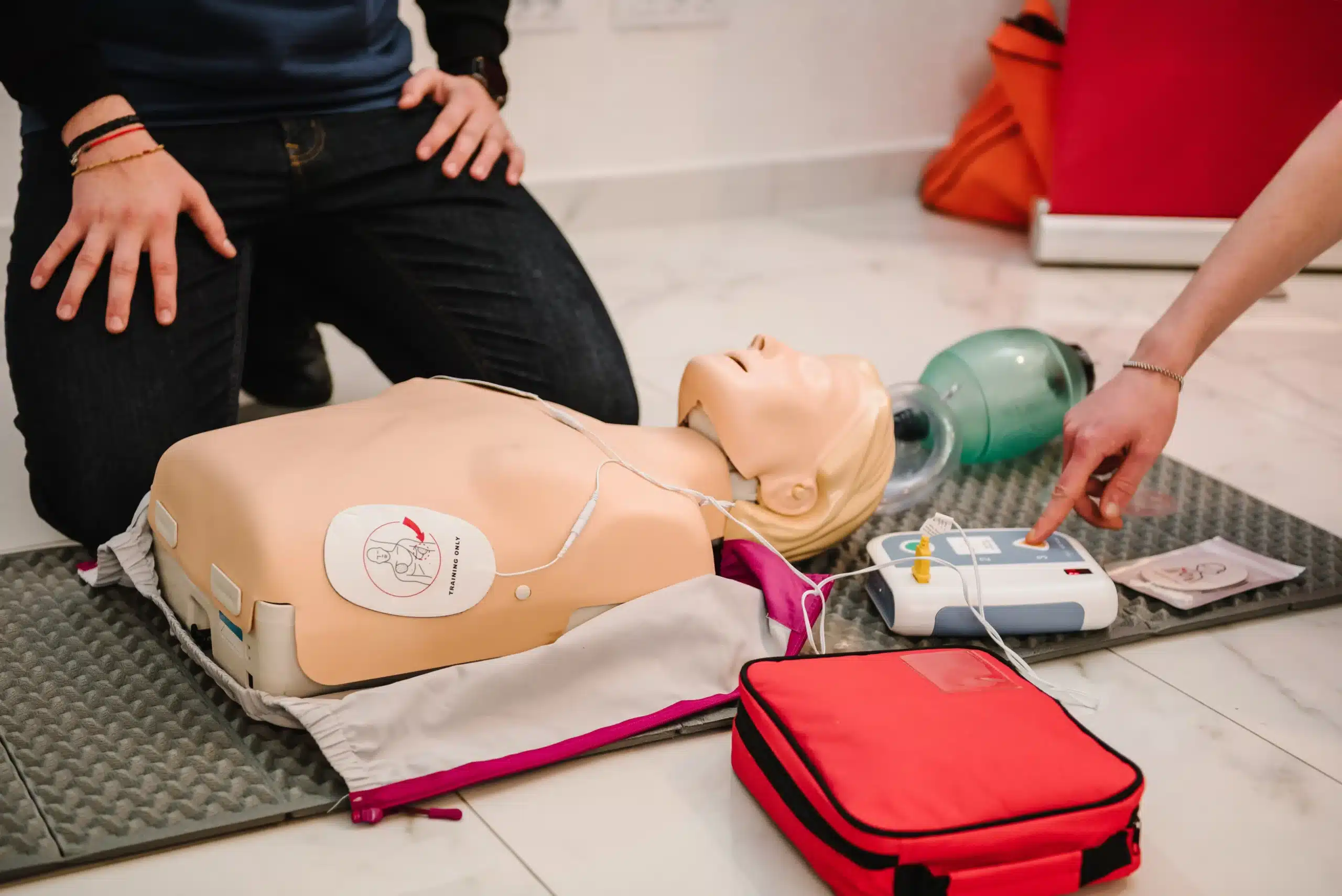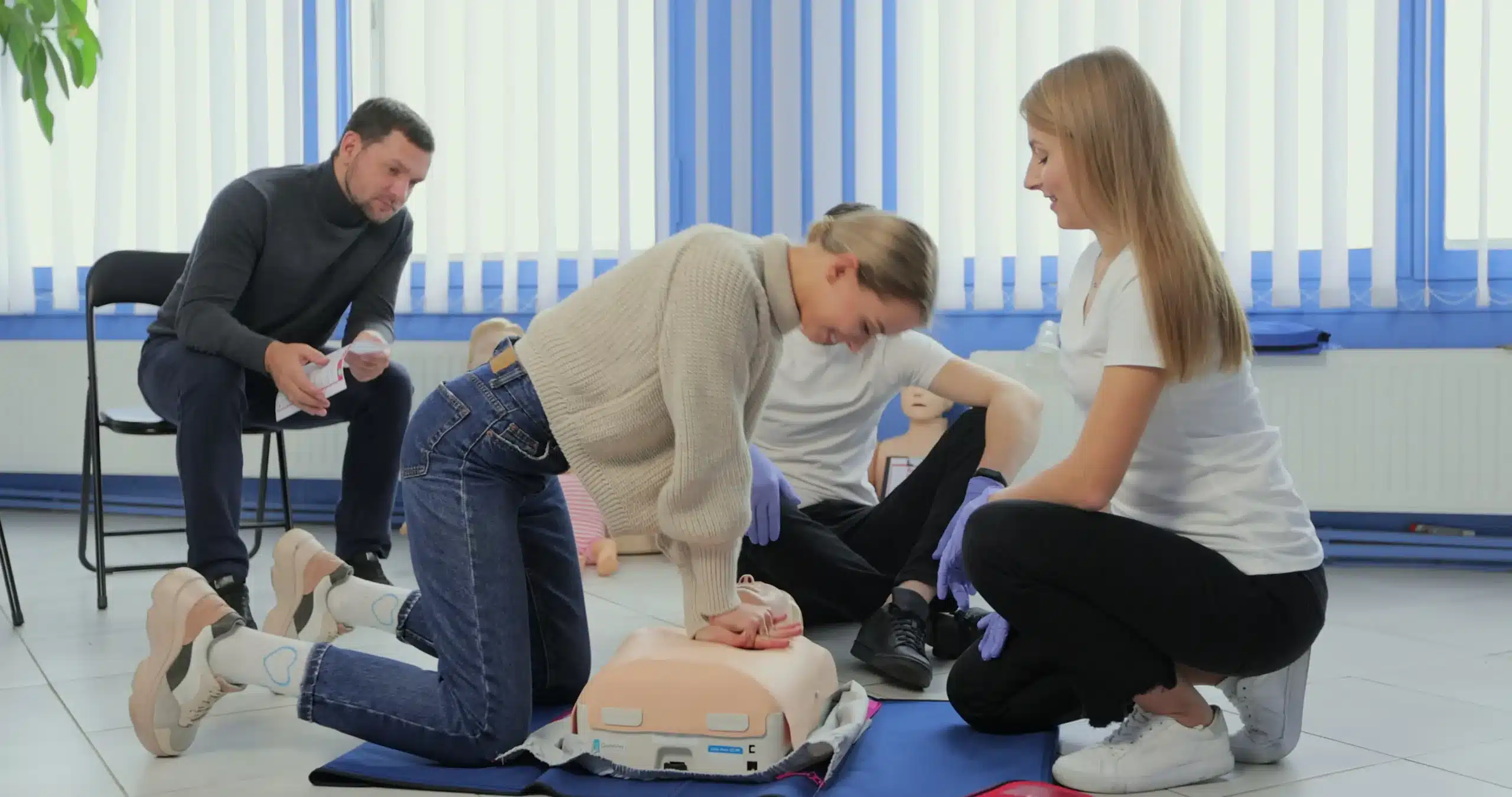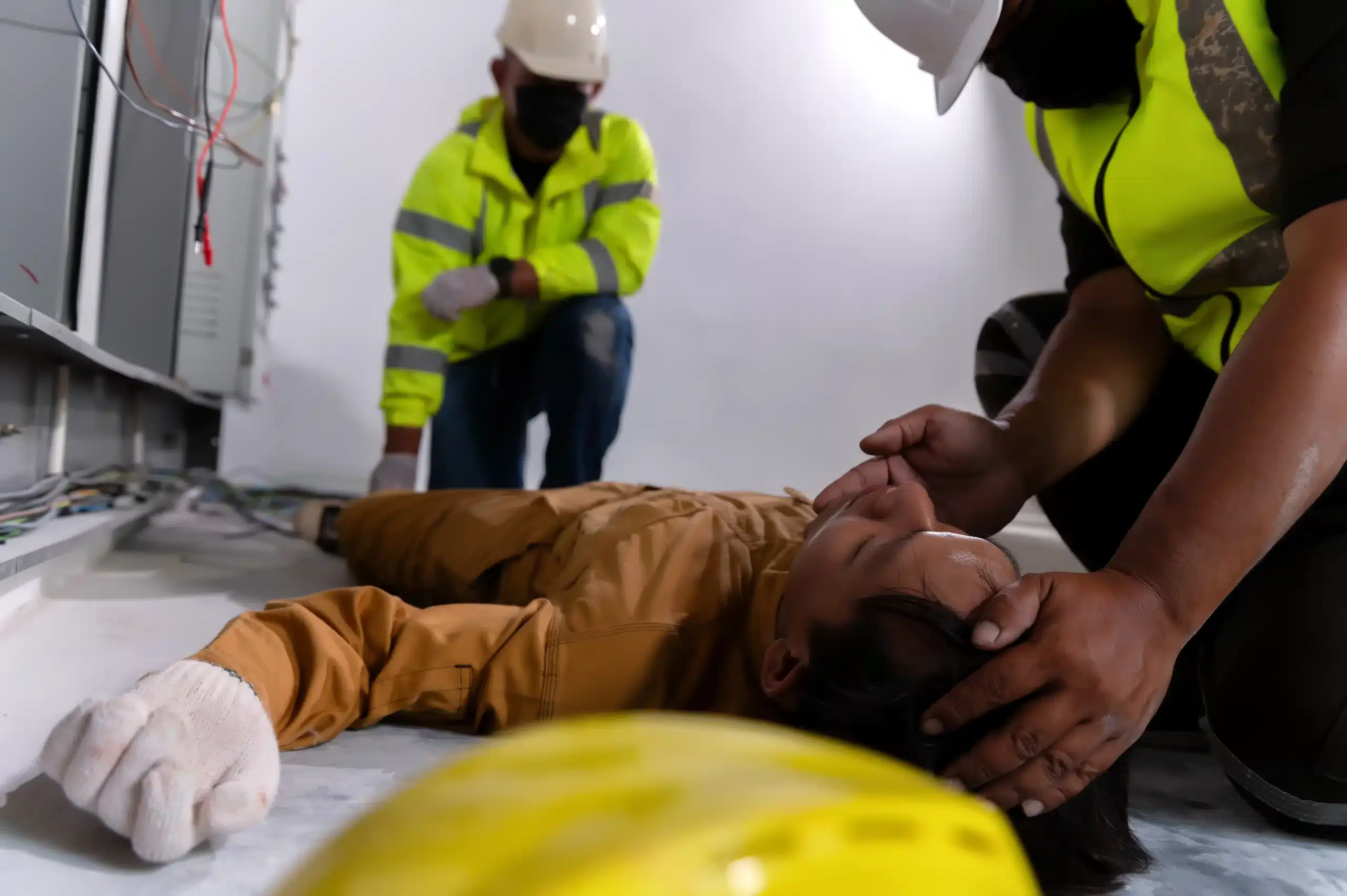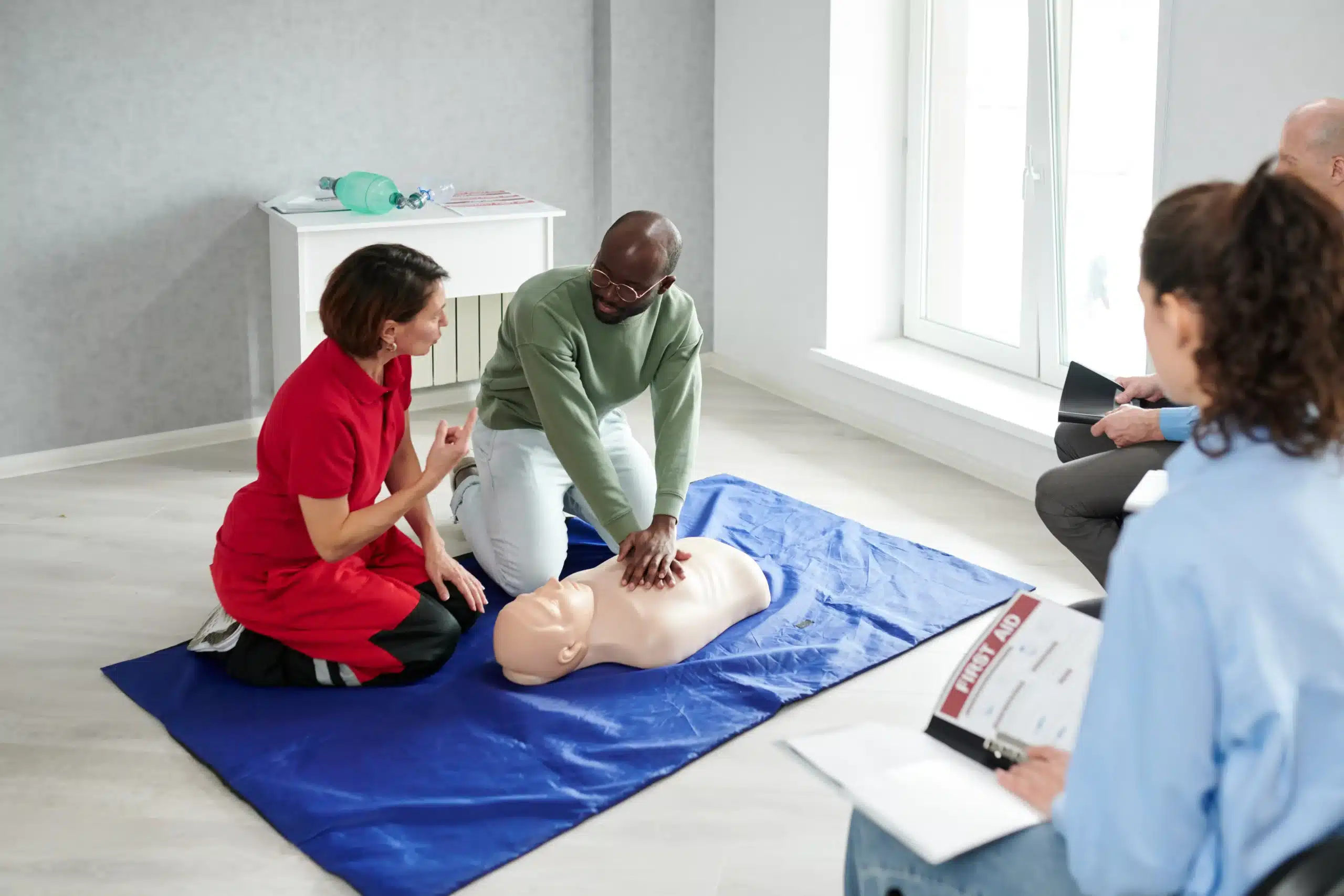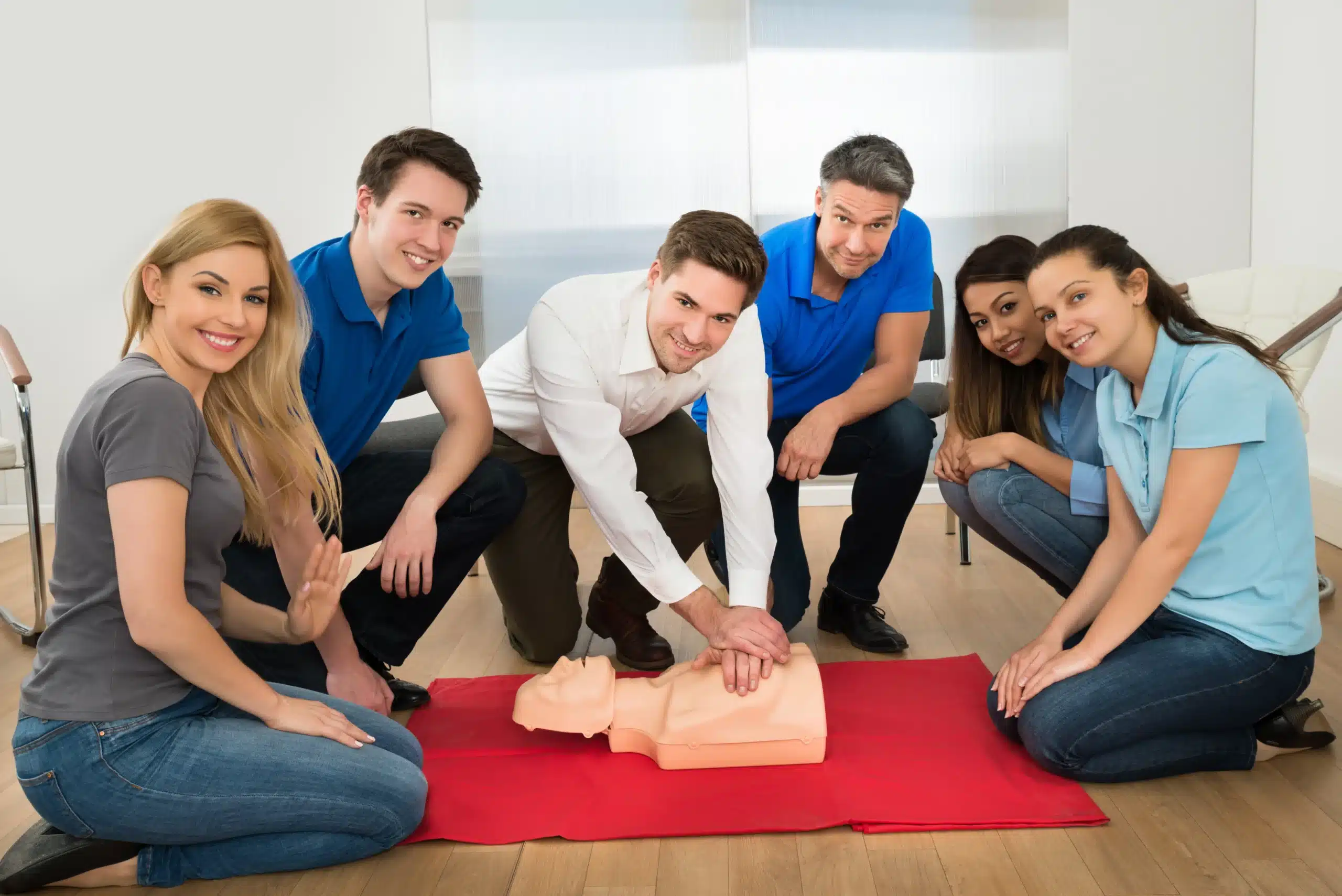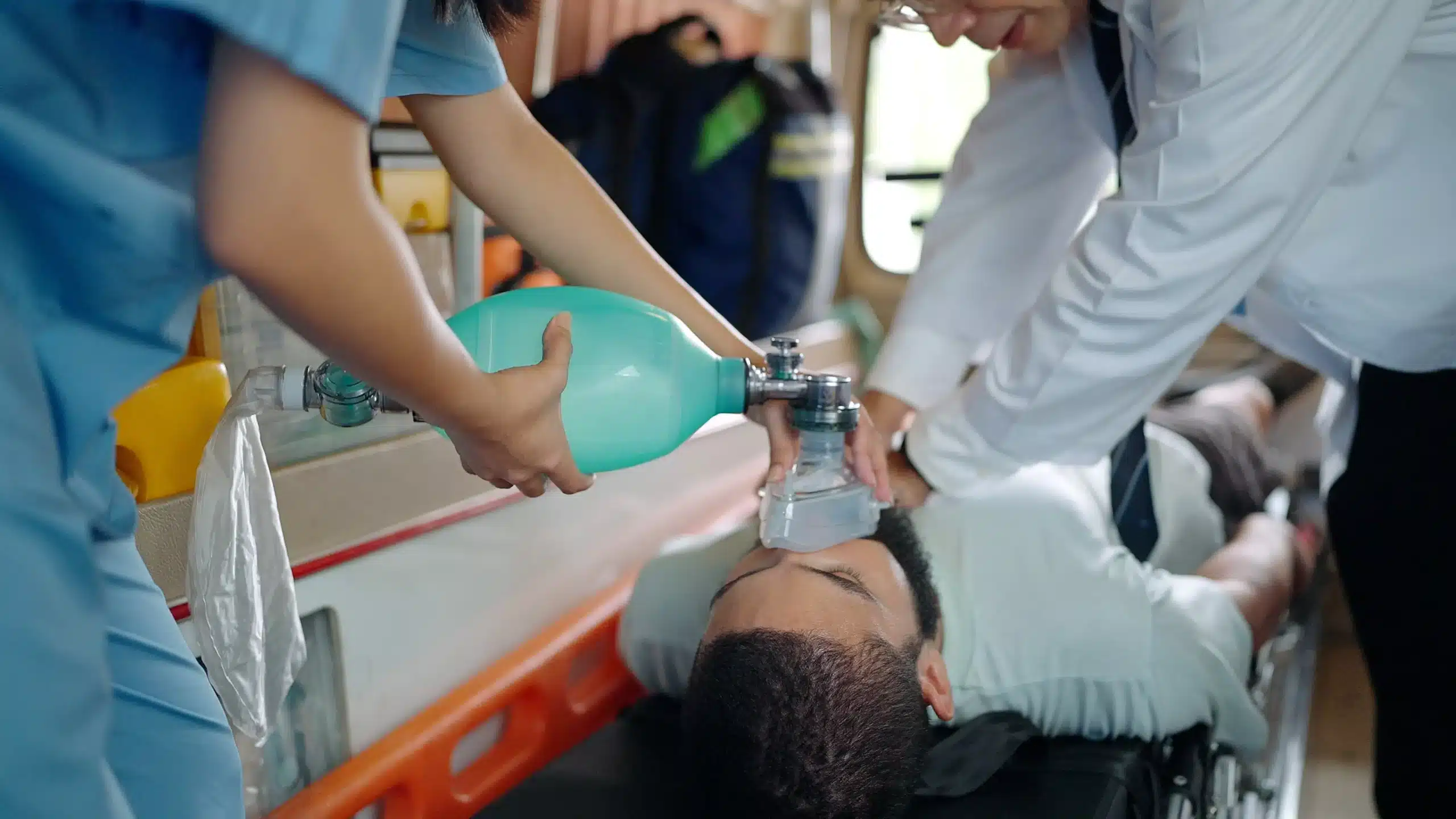BLS recertification is more than just a requirement; it’s a commitment to providing the best possible care. It’s about ensuring you have the most up-to-date skills to respond effectively in emergencies. If you’re a healthcare provider searching for “BLS recertification near me,” this post is your comprehensive guide. We’ll cover everything from the basics of BLS to finding the right recertification course in your area. We’ll also discuss the importance of staying current with the latest guidelines and how to make the most of your recertification experience.
Key Takeaways
- Maintain your lifesaving skills with regular BLS recertification: Staying current with the latest AHA guidelines ensures you can confidently respond to emergencies and provide high-quality care. Choose a course format that works best for your learning style and schedule.
- Find a reputable and affordable BLS recertification provider: Explore options like the American Heart Association, Red Cross, National CPR Foundation, and local providers like Safety Training Seminars. Consider factors such as cost, location, and available discounts.
- Maximize your training by actively participating and practicing: Prepare beforehand by reviewing course materials, engage in hands-on activities during the course, and continue practicing your skills after recertification to maintain proficiency.
What is BLS Recertification?
What is BLS & Why Recertify?
Basic Life Support (BLS) certification equips healthcare providers, and other qualified professionals, with the skills to respond to life-threatening emergencies. It focuses on providing immediate care for cardiac arrest, respiratory distress, and obstructed airways. Think of it as the foundation for saving lives. BLS certification isn’t a one-and-done deal. It requires recertification to ensure your skills are up-to-date and aligned with the latest American Heart Association guidelines. This refresher is essential because medical best practices and emergency procedures can evolve.
Why Stay Current?
Staying current with your BLS recertification isn’t just about checking a box; it’s about maintaining your ability to provide effective, high-quality care. Regular training reinforces best practices, builds confidence, and ensures you can respond swiftly and efficiently in critical situations. In healthcare, every second counts, and maintaining your BLS skills can significantly impact patient outcomes. Plus, staying certified demonstrates your commitment to professional development and providing the best possible care. For healthcare providers in Oakland, Safety Training Seminars offers convenient and affordable BLS recertification courses.
Debunking Common Misconceptions
There are a few common misconceptions about BLS certification. One is that it’s only for doctors and nurses. This isn’t true! Many professionals, including teachers, coaches, and childcare providers, benefit from BLS training. Another myth is that once certified, you’re set for life. However, recertification is crucial for staying current with evolving medical guidelines and maintaining your skills. Don’t let these misunderstandings prevent you from getting certified or keeping your skills sharp. BLS training is valuable for anyone who wants to be prepared to help in a medical emergency. CPR Classes Oakland offers a variety of BLS courses to fit your needs.
Find Top BLS Recertification Providers Near You
Finding the right BLS recertification provider is crucial for a smooth and valuable learning experience. Whether you’re renewing your certification for work or personal reasons, consider these factors to make the best choice.
Evaluate Local Options
Start by exploring options in your area. Think about what matters most to you: a convenient location, weekend classes, or maybe a smaller class size for more personalized instruction. Consider your learning style and how you best absorb information. Do you thrive in a hands-on environment, or do you prefer online learning? Finally, think about your budget. BLS recertification courses vary in price, so compare options to find one that fits your needs. Check if local community centers, hospitals, or dedicated training centers offer BLS recertification courses. Reading reviews from past students can also give you valuable insights.
Safety Training Seminars in Oakland
Safety Training Seminars offers a range of American Heart Association certification courses, including BLS, ACLS, PALS, and First Aid, in Oakland and over 60 other cities. They also provide group discounts, which can be a great option if you’re recertifying with colleagues. Their commitment to customer service and low prices makes them a valuable option to consider. Serving Alameda, Oakland, and Berkeley, CA, their Oakland location provides convenient access for those in the area.
Other Reputable Providers
Several well-established organizations offer BLS recertification courses nationwide. Here are a few key providers to explore:
American Heart Association
The American Heart Association (AHA) is a leading authority in CPR and emergency cardiovascular care. They offer a widely recognized BLS for Healthcare Providers course, known for its comprehensive and evidence-based approach. AHA courses are often considered the gold standard in BLS training.
Red Cross
The American Red Cross also provides BLS certification courses for healthcare professionals. Their curriculum covers a broad range of life-saving skills, extending beyond cardiac emergencies.
National CPR Foundation
The National CPR Foundation offers AHA-compliant BLS renewal and recertification courses. Their online format allows for flexible scheduling and completion at your own pace.
Online vs. In-Person Courses
Deciding between online and in-person BLS recertification depends on your individual preferences and learning style. Online courses offer flexibility and convenience, allowing you to learn from anywhere with internet access. In-person classes provide hands-on practice and direct interaction with instructors. Consider what works best for you and choose the format that will help you successfully renew your BLS certification. Many organizations offer both options, so you can select the format that best suits your needs.
BLS Recertification: Cost & Value
Getting recertified in Basic Life Support (BLS) is an investment in your skills and career. But how much should you expect to pay, and how do you find the best value? Let’s break down the costs associated with BLS recertification and explore how to balance cost with quality.
Typical Price Ranges
BLS recertification costs vary depending on the training provider, location, and course format. You can generally find online recertification courses for around $15 to $30, while in-person classes typically range from $40 to $75. Remember that these are estimates, and prices can differ based on your specific area and the chosen provider. For example, online BLS renewal through the National CPR Foundation is just $14.95.
Group Discounts & Package Deals
If you’re recertifying with a group of coworkers or classmates, ask about group discounts. Many providers offer reduced rates for group bookings, making it more affordable for everyone. Some training centers also offer package deals that combine BLS recertification with other courses like ACLS or PALS, which can save you money compared to taking each course individually. Talk to your colleagues—if they’ve had a positive experience with a provider, they might have some helpful recommendations.
Safety Training Seminars’ Low Price Guarantee
Safety Training Seminars is committed to providing high-quality BLS training at competitive prices. We offer a low price guarantee, ensuring you receive excellent instruction without breaking the bank. Our convenient Oakland location serves Alameda, Oakland, and Berkeley, CA, and our courses are designed to fit your schedule and budget. Check out our low price guarantee and our group discounts for more details. Our online options provide a reliable solution for busy professionals. We also offer the NRP certification course.
Balancing Cost & Quality
While cost is a factor, don’t compromise on the quality of your training. Effective BLS skills are crucial for providing rapid responses to cardiovascular emergencies. A high-quality BLS recertification course will cover essential techniques like CPR, AED use, and recognizing life-threatening situations. Look for courses that offer hands-on practice and align with the latest American Heart Association guidelines. The value of your BLS recertification lies in the knowledge and skills you gain to confidently respond to emergencies.
Choose the Right BLS Recertification Format
Deciding on the best way to recertify your BLS skills depends on your learning style, schedule, and budget. Let’s explore the pros and cons of different BLS recertification formats to help you find the perfect fit.
Benefits of In-Person Training
In-person BLS recertification offers a hands-on learning experience ideal for those who thrive in interactive environments. You’ll work directly with an instructor, practice skills on mannequins, and receive immediate feedback. The face-to-face format allows for real-time Q&A and fosters camaraderie among classmates. This collaborative setting is especially beneficial for healthcare providers, as BLS in healthcare is often a team effort requiring effective communication and coordination. Our in-person BLS classes emphasize teamwork and clear communication—essential skills for any medical emergency.
Advantages of Online Courses
Online BLS recertification courses provide unmatched flexibility and convenience. You can learn at your own pace, revisit materials as needed, and complete the coursework from anywhere with internet access. This format is perfect for busy professionals juggling multiple commitments or those who prefer self-directed learning. Online courses can also be a more affordable option. While online learning offers many advantages, it’s important to choose a reputable provider that aligns with the latest American Heart Association guidelines.
Blended Learning Options
Blended learning combines the best of both worlds, offering a mix of online coursework and in-person skills practice. You’ll typically complete the cognitive portion of the course online, then attend a shorter in-person session to demonstrate your skills and receive instructor feedback. This format offers flexibility while still providing the hands-on experience crucial for mastering BLS techniques. If you’re looking for a balance of convenience and practical application, blended learning might be the right choice. Check with local training centers like Safety Training Seminars to see if they offer this option.
Match Format to Your Learning Style
Ultimately, the best BLS recertification format is the one that best suits your individual learning style and needs. Consider how you learn most effectively, your available time, and your budget. Whether you prefer the dynamic environment of in-person training, the flexibility of online courses, or the hybrid approach of blended learning, staying updated on your BLS skills is crucial for providing high-quality care. Browse our BLS recertification options to find the format that works for you.
Meet Prerequisites & Requirements
Before signing up for BLS recertification, make sure you meet a few key requirements. Understanding these prerequisites will help you choose the right course and ensure a smooth recertification process.
Current Certification Status
A current BLS certification is the most important prerequisite for recertification. Your existing BLS provider card should be current or have expired within the last 30 days. This confirms your foundational knowledge and skills, allowing the recertification course to focus on refreshing and updating your expertise. If your card is expired by more than 30 days, you’ll likely need to take the full BLS course again rather than a recertification class.
Age & Profession-Specific Requirements
While there aren’t strict age limits for BLS certification or recertification, certain professions have specific requirements. Healthcare professionals, such as doctors and nurses, often need BLS certification as a condition of employment. Other professions, like teachers, coaches, and caregivers, may also require or benefit from BLS certification. Check with your employer or professional organization to understand any specific requirements for your role.
Necessary Materials & Preparation
Most BLS recertification courses provide the essential materials, including updated manuals and practice equipment. However, it’s always a good idea to review the course content beforehand. The Red Cross offers resources that can help you prepare for your BLS recertification. Familiarizing yourself with the latest guidelines and procedures will make the recertification process more efficient and reinforce your learning.
Recertification Timeframes
BLS certifications are typically valid for two years. The American Heart Association and Red Cross recommend renewing your certification within 30 days before or up to 60 days after its expiration date. This timeframe ensures you maintain your credentials and stay up-to-date with the latest life-saving techniques. Plan ahead and schedule your recertification course in advance to avoid any lapses in your certification.
Key BLS Recertification Skills & Knowledge
BLS recertification isn’t just about renewing a card; it’s about maintaining vital lifesaving skills. This section covers the core skills and knowledge addressed in a BLS recertification course.
High-Quality CPR Techniques
High-quality CPR is the cornerstone of BLS. Your recertification course will cover the latest guidelines from organizations like the American Heart Association, emphasizing proper chest compression rate and depth, hand placement, and minimizing interruptions. Refresher training ensures you can deliver effective compressions and ventilations, maximizing the chances of survival for someone experiencing cardiac arrest. This hands-on practice is crucial for building confidence and muscle memory.
Effective AED Use
Automated External Defibrillators (AEDs) are essential tools in cardiac arrest situations. BLS recertification reinforces how to quickly and correctly use an AED. You’ll review how to assess the patient, apply the AED pads, analyze the heart rhythm, and safely deliver a shock if needed. Understanding AED operation is vital, as prompt defibrillation significantly increases the likelihood of survival.
Recognizing Cardiac & Respiratory Emergencies
Early recognition of cardiac and respiratory emergencies is just as important as knowing how to respond. Your recertification course will cover how to identify the signs and symptoms of a heart attack, stroke, choking, and respiratory distress. Quick assessment allows for faster intervention and better patient outcomes. BLS training equips healthcare professionals with the knowledge to respond rapidly to these emergencies.
Choking Relief Techniques
Choking can be a life-threatening emergency. BLS recertification reviews techniques for relieving both partial and complete airway obstructions in adults, children, and infants. You’ll practice back blows, abdominal thrusts (Heimlich maneuver), and chest thrusts to ensure you can confidently assist someone who is choking.
Understanding the Chain of Survival
The Chain of Survival represents the critical steps that improve the chances of survival from cardiac arrest. BLS recertification reinforces the importance of each link: early recognition and activation of the emergency response system, early CPR, early defibrillation, and effective advanced life support and post-cardiac arrest care. Understanding how these steps work together emphasizes the importance of your role in a potential lifesaving situation.
Make the Most of Your BLS Recertification
Getting recertified in Basic Life Support (BLS) isn’t just a box to check—it’s a chance to refresh crucial lifesaving skills and boost your confidence in emergencies. Here’s how to make the most of your BLS recertification, from pre-course prep to staying sharp afterward.
Steps to Take Before Your Course
Planning ahead streamlines your recertification process. Before your course, review the BLS Provider Handbook and familiarize yourself with any updates to the guidelines. Knowing what to expect and understanding common challenges related to BLS recertification requirements for healthcare professionals can help you avoid potential setbacks. This preparation lets you focus on absorbing the information during the course. Consider your learning style and identify any areas where you’d like a refresher. This pre-course review sets you up for success.
Maximize Hands-On Practice
BLS recertification courses aren’t just about lectures. They offer valuable hands-on practice. Take full advantage of the opportunity to work with training equipment like mannequins and AEDs. Enroll in BLS Renewal classes to brush up on your knowledge, learn about new advancements, and practice scenarios that mimic actual emergencies. Ask your instructor for feedback and tips to refine your technique. The more you practice, the more confident and prepared you’ll feel in a real emergency.
Apply Your Skills Post-Certification
Your BLS recertification equips you with skills that can make a real difference. Consider how BLS training equips healthcare professionals to respond rapidly and effectively to cardiovascular emergencies. Look for opportunities to share your knowledge with colleagues, family, and friends. Consider volunteering for community events that might require BLS-trained personnel. Staying active with your skills keeps them fresh in your mind.
Stay Updated Between Recertifications
The medical field is constantly evolving. Staying current on the latest guidelines and best practices is key to providing effective care. Subscribe to newsletters, follow reputable organizations like the American Heart Association, and take advantage of continuing education opportunities. Review BLS recertification requirements for healthcare professionals to stay updated on evolving research and guidelines in emergency care. This ongoing learning ensures you’re always prepared to deliver the best possible care.
Related Articles
- BLS Renewal in Berkeley: Your Go-To Guide – Oakland CPR Classes
- BLS Renewal in Alameda: Your Easy Guide – Oakland CPR Classes
- BLS Certification Alameda: The Ultimate Guide – Oakland CPR Classes
- BLS Certification in Oakland for Healthcare Providers – Oakland CPR Classes
- Online BLS Classes in Oakland: Your Complete Guide – Oakland CPR Classes
Frequently Asked Questions
How often do I need to recertify my BLS certification? BLS certification is typically valid for two years. It’s recommended to renew within 30 days before or up to 60 days after the expiration date.
What if my BLS certification has expired by more than 30 days? If your certification has been expired for over a month, you’ll likely need to take the full BLS course again instead of just a recertification class.
What’s the difference between online and in-person BLS recertification? Online courses offer flexibility and self-paced learning, while in-person classes provide hands-on practice and direct interaction with an instructor. Blended learning combines both formats.
How much does BLS recertification cost? Costs vary depending on the provider, location, and course format. Online recertification typically ranges from $15-$30, while in-person classes are usually between $40-$75. Group discounts and package deals may be available.
What are the key skills covered in BLS recertification? Recertification covers high-quality CPR, AED use, recognizing cardiac and respiratory emergencies, choking relief techniques, and the Chain of Survival.


